You are probably thinking about which type of (fire pit gives off the most heat). The good sound is wood-burning fire pits.
Wood fires tend to be hotter than gas fires, making them the best choice for a heat source and they also increase the heat around us. Logwoods pit can be making huge fires than gas burners and gives off the most heat.
There are many types of fire pits available. if you are looking for the most heat-producing fire pit, it would be the wooden fire pit. They produce the most Btu. Woods like hickory and oak burn at a higher volume than gas burners, so they contain the most heat.
They produce maximum Btu. Dense woods like hickory and oak are different types of logwood that we can fire on the firepit. These are logwoods that are long-lasting for a firepit. Because firepits give heat keep us warm and also give us a chance to spend time.
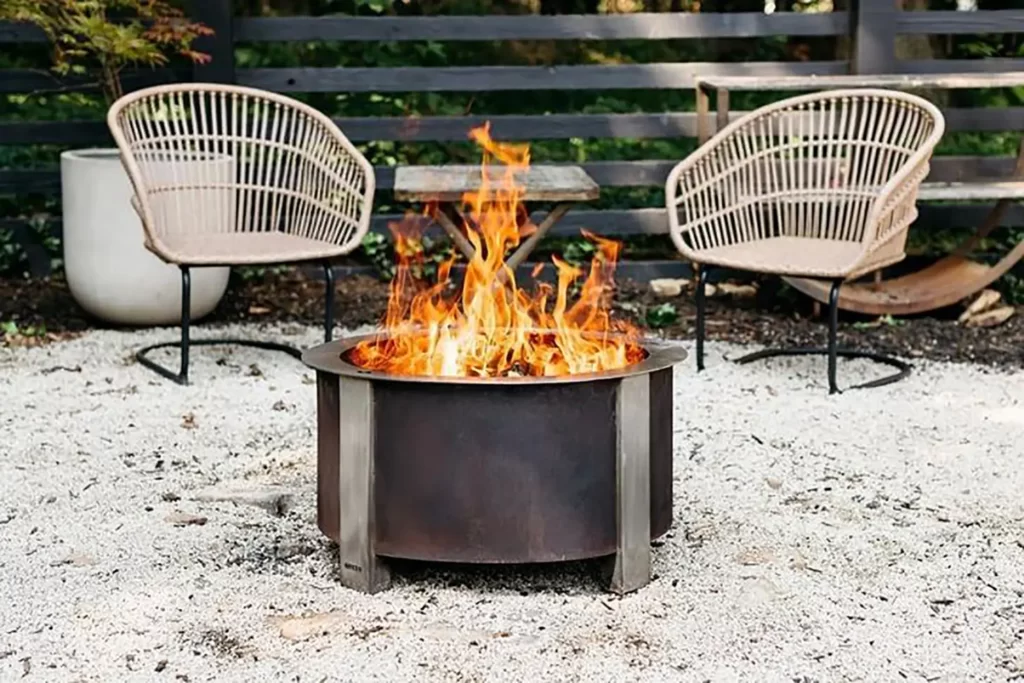
Types of Firepit
| Type of Fire Pit | Description |
|---|---|
| Wood-Burning Fire Pit | Uses wood logs or charcoal as fuel. Provides a traditional and rustic ambiance. |
| Propane Fire Pit | Utilizes propane gas as fuel. Offers convenience, easy control, and clean-burning flames. |
| Natural Gas Fire Pit | Connected to a natural gas supply for fuel. Provides a continuous and reliable heat source. |
| Gel Fuel Fire Pit | Uses gel fuel canisters to produce flames. Offers portability and no smoke or ash residue. |
| Ethanol Fire Pit | Operates on liquid ethanol fuel. Provides a clean-burning flame and requires no ventilation. |
| Electric Fire Pit | Powered by electricity. Offers a hassle-free option with no smoke or fuel requirements. |
| Tabletop Fire Pit | Small fire pit designed to be placed on tables or countertops. Adds ambiance to outdoor dining areas. |
| Portable Fire Pit | Lightweight and easily movable fire pit. Ideal for camping or tailgating activities. |
Eco-friendly Firepit
| Fire Pit Type | Eco-Friendliness |
|---|---|
| Wood-Burning Fire Pit | Less eco-friendly due to emissions from burning wood |
| Propane Fire Pit | Relatively eco-friendly, produces fewer emissions |
| Natural Gas Fire Pit | Similar to propane, cleaner-burning but still non-renewable |
| Gel Fuel Fire Pit | Relatively eco-friendly, choose sustainable gel fuel sources |
| Ethanol Fire Pit | Considered eco-friendly, derived from renewable resources |
| Electric Fire Pit | Most eco-friendly, produces no emissions directly |
Do gas fire pits give off heat?
A gas fire pit gives off heat due to the gas flames burning inside the gas burner, which can be simply turned on and off with an electronic ignition system. That’s why they are very popular nowadays.
Gas fire pits can get costly when you add gas line hookups and other extras that will add up to the cost significantly. A fire pit is an efficient and safe way to provide heat during the winter months. The heat generated by a gas fire pit flame is easily controlled and made suitable for indoor and outdoor settings.

Propane firepits give off the most heat
Propane fuels are also energy efficient because they provide a certain, manageable level of heat. But the same cannot be said about wood-burning fires, because depending on us how much wood is used for burning is difficult to maintain at a cozy heat level.
Another way that a propane fire pit is environmentally friendly is that you reduce the number of pollutants in the atmosphere. Propane fire pits also come in different types. Good decors can be used around it. Control the flames according to our wish. Keep it on high flame and on low flame.
A propane fire pit provides most of the benefits of a traditional fire pit without the drawbacks and can be customized to suit your own unique taste.
Do fire pits give off a lot of heat?
Yes, fire pits can give off a lot of heat, depending on several factors such as the size of the fire pit, the type of fuel being used, and the design of the fire pit. Wood-burning fire pits, for example, can produce a significant amount of heat, with some models capable of generating up to 100,000 BTUs (British Thermal Units) per hour. Propane fire pits can also produce a considerable amount of heat, with some models capable of generating up to 60,000 BTUs per hour.
It’s important to note that while fire pits can generate a lot of heat, the amount of heat they produce can vary depending on several factors such as the size and design of the fire pit, the quality of the fuel being used, and the weather conditions. For example, a smaller fire pit may not generate as much heat as a larger fire pit, and a fire pit that is not properly ventilated may not burn as hot as one that has good air circulation.
Overall, fire pits can provide a warm and cozy atmosphere, and they can be a great source of heat for outdoor gatherings and activities. However, it’s important to use caution when operating a fire pit and to follow the manufacturer’s instructions for safe use and maintenance to prevent accidents or injuries.
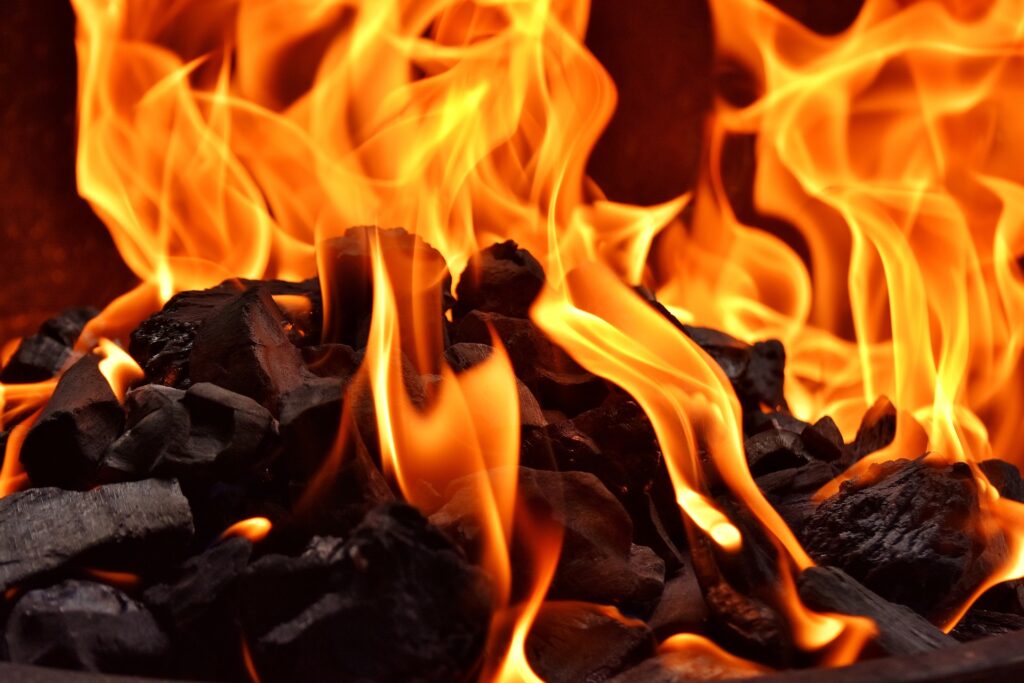
Best Fire Pit Design for Heat
| Fire Pit Design | Description |
|---|---|
| Bowl-shaped Fire Pit | Efficient in radiating heat with a curved shape directing heat outward. |
| Fire Pit with Fire Bricks or Fire Stones | Enhances heat retention through the use of fire bricks or stones. |
| Fire Pit with a Dome or Hood | Traps and circulates heat, increasing warmth around the fire pit. |
| Fire Pit with Adjustable Grates or Air Vents | Allows for better control of airflow and heat intensity. |
| Fire Pit with Reflective Surfaces | Reflects and radiates heat back towards the seating area. |
| Fire Pit with a Wide Opening | Provides better air circulation for more efficient burning and higher heat output. |
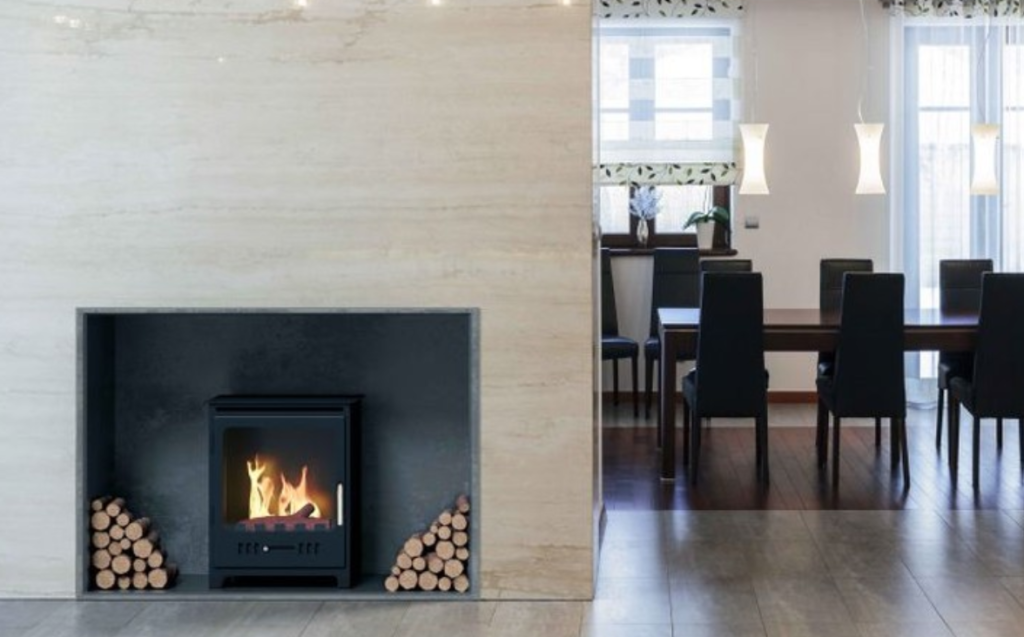
Radiant Heat Fire Pit
A radiant heat fire pit is a type of outdoor heating system that provides warmth by emitting heat directly from the fire pit’s surface. Unlike traditional fire pits that rely on convection to distribute heat, radiant heat fire pits radiate heat in all directions, providing more even and efficient heat distribution.
These types of fire pits typically use propane or natural gas as a fuel source, and feature a burner system that is designed to create flames that are directed upward towards the fire pit’s surface. The surface of the fire pit is usually made of materials like stone or metal that are capable of absorbing and radiating heat.
Radiant heat fire pits are a popular choice for outdoor entertaining spaces, as they provide warmth and ambiance for gatherings and events. They can be designed in a variety of shapes and sizes to fit any space and can also be customized with features like built-in seating and storage. It’s important to note that radiant heat fire pits should always be used according to the manufacturer’s instructions and with caution to avoid accidents or injuries.
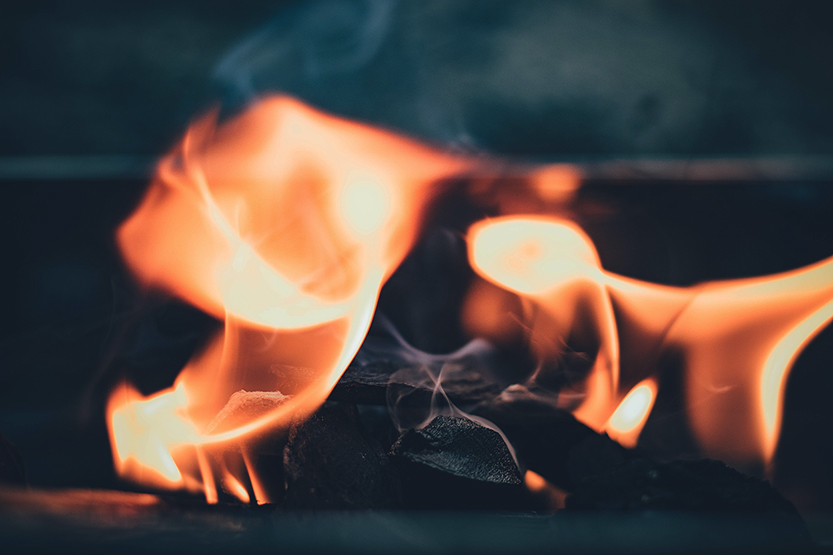
Fire Pit Heat Deflector
A fire pit heat deflector is a device designed to help reduce the heat output of a fire pit and redirect the heat away from the surrounding area. Heat deflectors can be especially useful for outdoor fire pits, which can generate a significant amount of heat and cause discomfort or even damage to nearby objects and surfaces.
There are a few different types of heat deflectors available for fire pits, including:
- Metal Heat Shields: Metal heat shields are flat or curved plates that can be placed between the fire pit and the surrounding area to deflect heat. They are typically made of heat-resistant materials like aluminum or steel and come in a range of sizes and shapes to fit different fire pit models.
- Fire Pit Screens: Fire pit screens are mesh screens that can be placed over the fire pit to help reduce heat output and prevent sparks or embers from escaping. They are typically made of heat-resistant materials like stainless steel or tempered glass and can be designed to fit specific fire pit models.
- Heat-Resistant Mats: Heat-resistant mats are made of materials like fiberglass or silicone and can be placed underneath the fire pit to provide a protective barrier between the fire and the surrounding area. They are typically lightweight and easy to move or store when not in use.
When choosing a fire pit heat deflector, it’s important to consider factors like size, heat resistance, and ease of use to ensure you choose the best one for your needs. It’s also important to follow the manufacturer’s instructions for safe use and maintenance to prevent accidents or injuries.
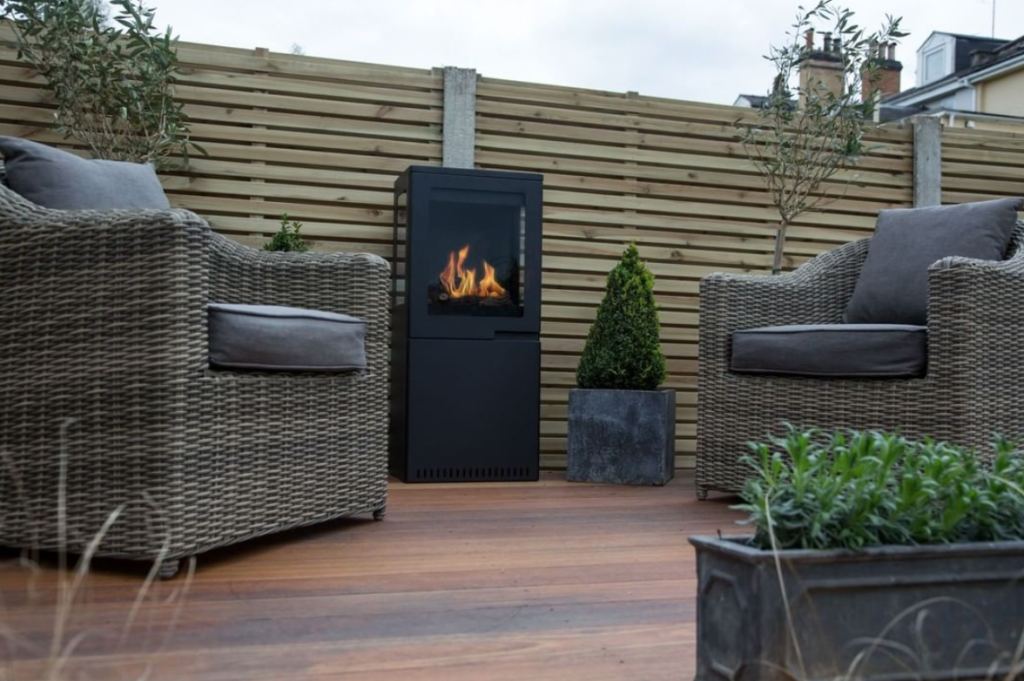
Propane firepits vs Wood firepits
Table comparing propane fire pits and wood fire pits:
| S.no | Propane Fire Pits | Wood Fire Pits |
|---|---|---|
| Fuel | Propane gas | Wood logs or charcoal |
| Convenience | Easy ignition and adjustable flame control | Requires firewood, kindling, and manual lighting |
| Cleanliness | Clean-burning with minimal smoke and ash | Emits smoke, soot, and ash |
| Heat Output | Provides consistent and controllable heat | Heat output can vary depending on wood quality |
| Maintenance | Minimal cleanup and no ash disposal | Requires regular cleaning of ash and debris |
| Portability | Portable and easy to move | Less portable due to the need for firewood |
| Environmental Impact | Produces carbon emissions | Carbon emissions from burning wood |
| Safety | Safer with no flying sparks or embers | Risk of flying sparks and embers |
| Availability | Requires propane fuel and tank availability | Requires a steady supply of firewood |
| Ambiance | Clean and controlled flames | Traditional and rustic ambiance |
Remember Safety
Put a fire pit on tile or concrete instead of on non-flammable surfaces such as grass or a wooden deck. Always remember to keep an eye on the “pet and child, zone” around your pit to prevent injury to both.

How much heat does a propane pit produce
In general, you want to make sure it hits a basic level of capability while performing its basic function of providing heat. It needs a high heat output to even be considered. 40,000 Btuh (British Thermal Units Per Hour) is a good average and is the most common you will see. Being somewhat short isn’t necessarily a disqualification, but it’s worth noting; A propane fire pit that runs slightly colder will not be suitable for cold, harsh winters. The high burn is also considered a plus, as it can easily be turned off if it gets too hot.
Conclusion
Fire pits are a great way to spruce up your backyard setup, especially in colder climates. They look pretty well and provide a nice comfortable seating area for you, your family, and your friends and neighbors to all have fun when they come over to visit.
FAQs
- Are wood-burning firepits more suitable for outdoor use? Yes, wood-burning firepits are commonly used in outdoor spaces due to the natural wood combustion and the ambiance they provide.
- Can the heat output of a propane firepit be adjusted? Yes, propane firepits offer adjustable heat output. You can regulate the flame intensity and heat level by adjusting the gas flow.
- Is natural gas a cost-effective fuel for firepits? Natural gas can be a cost-effective fuel for firepits, as it provides a continuous source of heat. However, the overall cost depends on factors such as local gas prices and consumption.
- How long does the gel fuel last in a gel firepit? The duration of gel fuel in a gel firepit varies depending on the firepit’s design and the size of the fuel container. Generally, a can of gel fuel can last for a few hours.
- Can electric firepits be used indoors? Yes, electric firepits are often used indoors because they do not produce real combustion or emit harmful fumes. They provide a controlled flame effect for decorative purposes.

